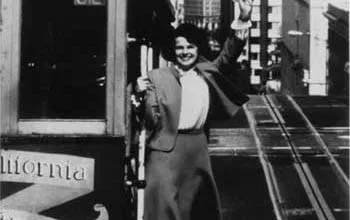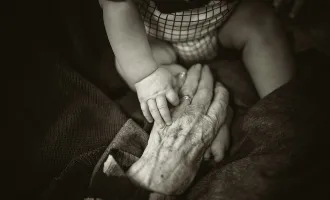
This Date in UCSF History: Clean Needle Conflict
Originally published in Synapse on February 5, 1987.
As intravenous drug use receives more attention as a factor in the spread of AIDS, efforts to prevent that mode of virus transmission cause considerable debate. The idea of providing clean needles to IV drug users may prove to be the most divisive of all proposals to date.
Developing effective anti-AIDS efforts aimed at IV drug users presents numerous obstacles for public health officials, who must balance the chances of gaining acceptance of their efforts in the drug-using community with legal and political constraints.
Last July, preliminary discussion of the needle exchange idea by the San Francisco health department quickly drew strong opposition from Mayor Dianne Feinstein, who called giving away needles “a terrible and truly offensive idea that would put the health department in the position of aiding and abetting drug addiction.”
Little further public discussion of the issue followed her pronouncement.
While some observed the episode as a case of the triumph of politics over public health, the mayor is not alone in her assessment.
Dr. David Smith, founder of the Haight Ashbury Free Medical Clinic and a nationally known figure on drug abuse, points out that needle sharing is often an integral part of the “ritual” of injecting drugs, and that AIDS in this population presents a much more difficult public health problem than other diseases.
Smith is opposed to giving away needles, not only for the reason cited by Feinstein, but also because he believes such a program would not work in San Francisco.
“We should not provide addicts with the means of their addiction,” he says. “Providing them with needles would be doing exactly that and sends a very mixed message to the addict. I know of no evidence to support the notion that an addict would do anything but share sterile needles with other addicts.”
Smith sees needle sharing as a strongly ingrained ritual among IV drug users, which is unlikely to be changed by education or an increased supply of needles.
“In previous needle sharing-related epidemics, such as with hepatitis, the response from addicts has been to ‘put the yellow guy last,’” he says, referring to the visible jaundice which often accompanies hepatitis infection.
“Needle sharing clearly continued, but the addicts modified the ritual. However, the current AIDS problem involves people who may have the virus but who are not symptomatic for many years, thus making it impossible to identify the infected person and modify the needle sharing ritual in that way.”
A growing number of people in the health field disagree or are becoming more willing to take chances in the desperate attempt to stop the AIDS virus from spreading.
Former San Francisco Director of Health Dr. Mervyn Silverman, now director of the National Foundation for AIDS Research, has come to support the idea of starting programs on the Amsterdam model.
“I support a needle exchange program, if it is done so that it does not increase the pool of needles out there and provides a chance for interaction between drug users and health care professionals,” he says.
“I agree that it gives a mixed message, but I think we’re now in a state of ‘war’ against AIDS, and in wartime we sometimes do things a little differently than in times of peace.”
Feinstein has made no further public statements on the issue, and a spokesman will say only that “at the time of the discussion last year, the mayor made it clear that she opposed giving away free needles or anything else that might facilitate drug abuse.”
Dr. Tom Peters, the San Francisco associate director of health who drew the mayor’s fire on the issue last year, does not go so far as supporting a needle exchange program, but does not rule one out, either.
“It is still an issue that is being watched and discussed here — we are looking at other jurisdictions to assess the efficacy of these programs and to see what the political problems are,” he said.
Dr. Philip Lee, director of the Institute for Health Policy Studies at UCSF and chairman of the San Francisco Health Commission, supports the health department’s position.
“The Commission has looked at the issue but not formally, as we have not been asked to. We do support the bleach program as an alternative and as an indication of whether these kinds of efforts can work.”
A number of other observers feel providing needles is an idea whose time is coming, and some movement is under way to clear the way for such programs at national and local levels. Last week, an official with the national Centers for Disease Control suggested that needle exchange programs be instituted in this country. In addition, a resolution urging the establishment of pilot needle exchange projects is under consideration by the California Medical Association. The resolution originated in San Francisco.
As in most areas, most drug users in San Francisco remain outside of treatment services. Public health providers decry the shortage of funding and services, which makes any outreach and education program problematic.
Only an estimated 15 percent to 25 percent of the city’s drug users have any contact with drug treatment programs, and waiting lists are already long for new treatment entry slots.
“We need a tremendous increase in resources for education and treatment,” says Les Pappas, coordinator of the IV drug prevention program with the San Francisco AIDS Foundation, echoing many other comments from throughout the health care system.
The emergence of drug abuse as an important factor in the AIDS epidemic has multiplied the problems of those dealing with drugs or ADDS as health problems. The stigma attached to drug abuse often makes a rational approach difficult, just as similar prejudices regarding homosexuality have sometimes hindered progress in the case of AIDS.
However, gays have had eloquent and even powerful spokesmen; no such lobbyists exist for IV drug users in this country.
A “junkies’ union” in Amsterdam was instrumental in getting appropriate resources and cooperation of drug users in that city, where a consciously nonjudgmental attitude toward drug use has been adopted.
There, as in this country, many users remain out of treatment by choice. It would probably be impossible to get all drug users to stop using drugs under any set of circumstances.
Also, in Amsterdam 35 outreach workers cover a city similar in size to San Francisco, where only eight street workers are funded.
Without adequate public health resources and probably some changes in the social and legal environment regarding substance abuse, efforts such as a needle exchange program may in fact be doomed to failure here.
But, as a number of commentators have speculated, the pressures of an increasing number of AIDS cases may force society into overcoming denial and making some difficult decisions.
“It’s only a matter of time before leaders in all fields realize that there are no effective ‘front lines’ in this epidemic — AIDS will not stay in cleanly defined groups,” said Peters. “‘People still think that if you are not engaging in unprotected homosexual sex and not shooting drugs, you’re safe. They’re wrong.”
Silverman looked at some other psychological barriers to action.
“A lot of people don’t give a damn about drug addicts — ‘let them die’ is their attitude. But even if they must think that, perhaps they might be concerned when the partners and children of drug users and many other people are affected by this disease.”
“As for a needle exchange program,” he said, “the attitude of ‘Sorry, but we can’t even talk about that’ is an unfortunate one which may doom some people to death.”



